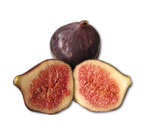Difference between proactive and reactive medicine
Posted by: admin on: June 15, 2011
Diagnosing and treating, a medical problem before its consequences set in, is the right method of dealing with the patients. Waiting for the outcome of the problem to set in & then treating it is not the right thing to do. Let us be proactive & do justice to our patients.
Team@CMHF
Looking back, some of my biggest medical mistakes have been times when I was reactive rather than proactive when faced with a clinical problem. A doctor may have to be one or the other depending on the circumstances, but knowing when and which approach to take is one of the harder skills of medicine, taking time and experience to master.
A patient with a unilateral sensorineural hearing loss may have an acoustic neuroma. Proactive doctoring means doing a contrasted MRI scan if funds permit. If no funds, a cheaper but far less sensitive investigation is a CT scan, which will show a large tumor but not a small one. Reactive doctoring means making the diagnosis by MRI scan if hearing deteriorates or when brainstem compression or facial weakness sets in.
Treating unilateral sensorineural hearing loss, as with Bell’s palsy, with cortisone and antiviral drugs is proactive care. For idiopathic facial palsy (Bell’s palsy) the jury is still out as to whether either treatment is more effective than placebo. Conservative treatment, i.e. nothing, is reactive.
For these and the many thousand other issues of medical protocol, there are strong arguments to support all approaches, many based on sound research.
We don’t want to have those clouds of suspicion hanging over the decisions we make for our patients. We need to try to be as proactive as we can within the bounds of safe and sensible evidence-based medicine. One way is to discuss all the options and let the patient decide. This takes time, and effort. One approach may be good and right for one patient, and not appropriate for the next. Another is to practice preventative medicine wherever possible, i.e. encouraging parents of children with recurrent upper respiratory tract infections not to smoke. This is proactive medicine at its best.
The author thinks he had better outcomes being proactive, with fewer complications and adverse events as a result, than being reactive. But time constraints on doctors’ work against these ideals, and being proactive under time pressure may mean more medications and more investigations.
All of this needs to be kept in mind when you’re running late, and filling out your next lab request or prescription.
Ref: http://www.kevinmd.com/blog/2011/02/difference-proactive-reactive-medicine.html
For – Allopaths, Ayush
Search
- drchasrani: Difficult to get such a data, authenticated at that. Try Times of India online library
- rakesh pore: hi, where can i get genuine information about "10 most common drugs sold in india?" i want it for a local project
- nilesh dutta: sir, Plz give detail about MBA Sports Management Thanks and Regards


Leave a Reply